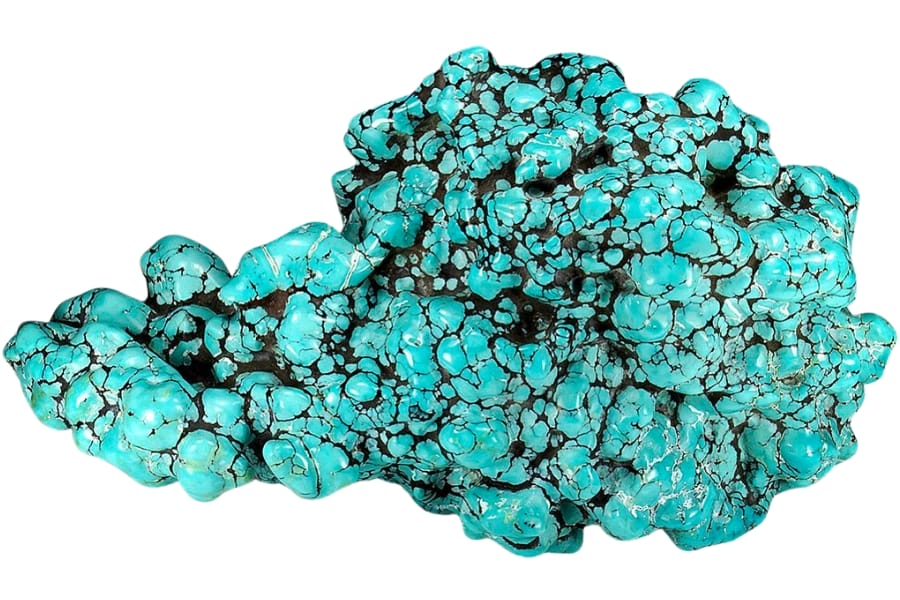Celebrated for its dazzling casinos and vibrant nightlife, Nevada holds more hidden treasures— a remarkable variety of rocks, minerals, gems, and crystals. As the “Silver State,” our geological landscape is as rich and diverse as our heritage.
From the striking red sandstone formations of the Valley of Fire State Park to the rugged beauty of the Great Basin, there’s a treasure trove of rocks and minerals found in Nevada.
Whether you’re a seasoned rock collector, a student of geology, or simply someone who appreciates nature, the different types of rocks found in Nevada will captivate and inspire you. And here, you’ll get to know them one by one!
A List of The Common Rocks, Stones, and Minerals Found in Nevada
The abundance of rocks and minerals in our state is nothing short of astounding. If you’re planning to dip your toe in the waters of our abundant natural treasures, you’re in luck!
We’ve created several guides that will help you locate and uncover different rocks and minerals found in Nevada. Check these out:
Nevada Rock, Mineral, and Gem
Our state is heavily associated with specific geological wonders that represent it. Below are our staples when it comes to rocks, minerals, and gems:
| Nevada State Rock | Sandstone |
| Nevada State Mineral | Silver |
| Nevada State Gem | Virgin Valley Black Fire Opal and Turquoise |
Our discussion below might get you even more excited to pack your bags, gear up, and get ready to go to the areas where you can find your coveted rock, gem, or crystal.
But first, remember to review our state’s local collecting guidelines so you can abide by them during your exploration. Visit the Nevada Division of Minerals website for more information.
Always Confirm Access and Collection Rules!
Before heading out to any of the locations on our list you need to confirm access requirements and collection rules for both public and private locations directly with the location. We haven’t personally verified every location and the access requirements and collection rules often change without notice.
Many of the locations we mention will not allow collecting but are still great places for those who love to find beautiful rocks and minerals in the wild without keeping them. We also can’t guarantee you will find anything in these locations since they are constantly changing.
Always get updated information directly from the source ahead of time to ensure responsible rockhounding. If you want even more current options it’s always a good idea to contact local rock and mineral clubs and groups
Wonderstone
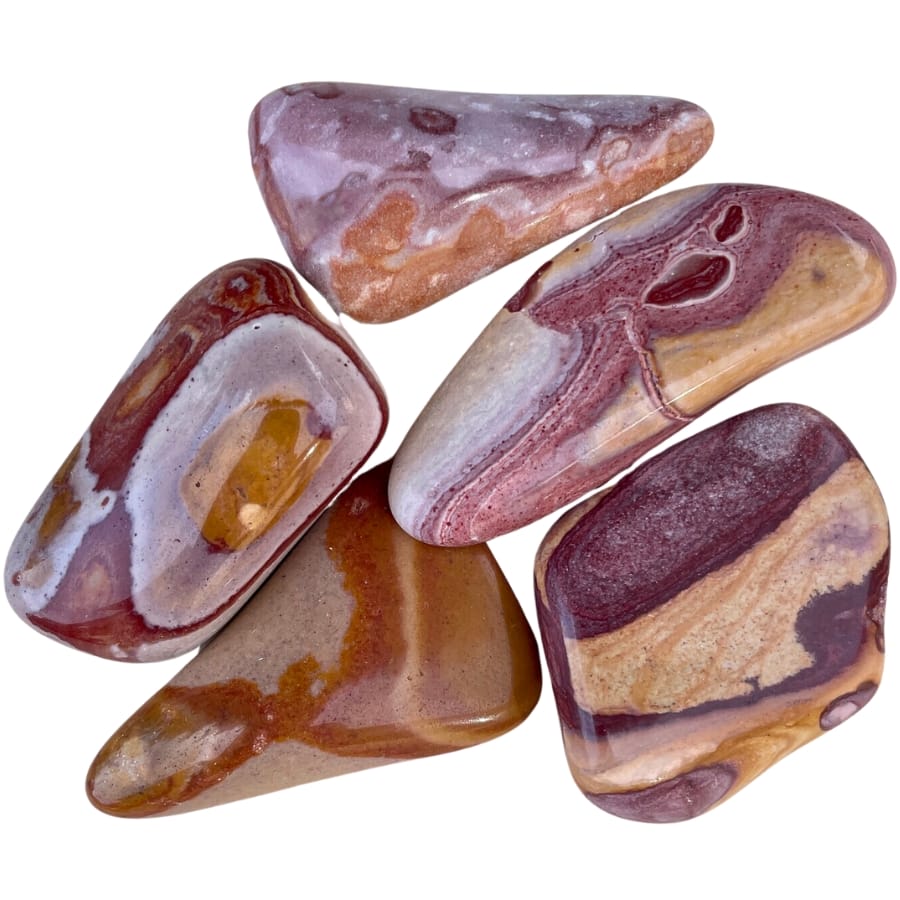
Wonderstone can catch your eye with its amazing patterns and colors. It looks as though an artist painted swirls of red, yellow, brown, and even black on it. Each piece of this rock has its own unique blend of colors and swirls.
It starts with a tuff, a soft rock formed from volcanic ash that settled long, long ago. This ash gets squished and heated up deep over time.
Here’s where it gets interesting: different minerals seep into the rock, and these minerals are what give wonderstone its vibrant colors. Iron minerals, for instance, add those beautiful reds and yellows.
Wonderstone is valued for several reasons. It’s used in making jewelry, decorative items, and even in art projects because of its unique, natural patterns.
It’s also really interesting to geologists and rock collectors because of the way it forms and the story it tells about the Earth’s past.
Where you can find wonderstone in Nevada
You can find wonderstone in many areas of our state, including:
- Valley of Fire State Park
- Excelsior Mountain
- Little Antelope Summit area
Sandstone
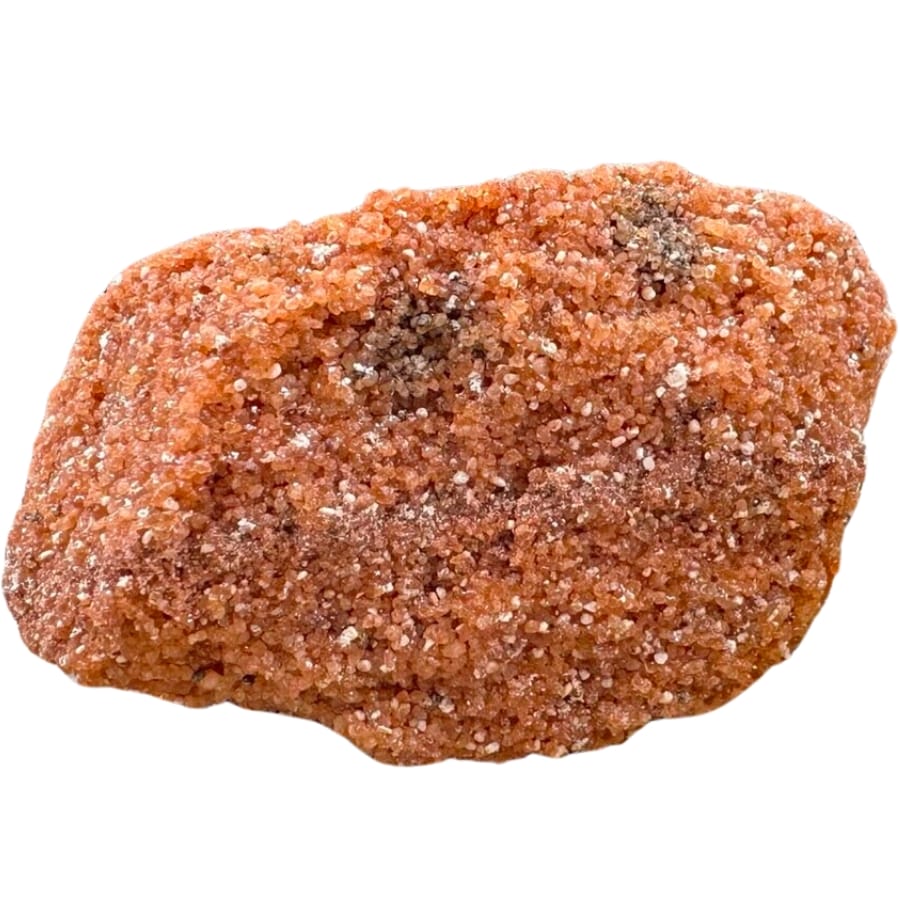
Sandstone is pretty common and comes in a bunch of different colors like red, yellow, white, and even brown. It’s often kind of grainy, like a bunch of tiny sand grains stuck together, which is exactly what it is!
Its formation starts with sand, the kind you find on beaches or deserts. These sand grains get piled up in layers. Then, over thousands or even millions of years, the weight of these layers squishes the sand grains together.
During this time, minerals like quartz or calcite, which are found naturally in water, act like glue and stick these grains together. This process is called cementation. The end result? The solid sandstone.
If you’re wondering about sandstone’s value, you can check out our article specifically on that.
Sandstone is strong but also pretty easy to cut and shape, which makes it great for constructing buildings, statues, and even pathways. It has also been used in art for a long time because of its pretty colors and patterns.
Where you can find sandstone in Nevada
As the official state rock of Nevada, sandstone is abundant here. Among the places where you can find them are:
- Bunker Hill Mine
- Montezuma Mining District
- Nevada Picture Rock quarry
Marble
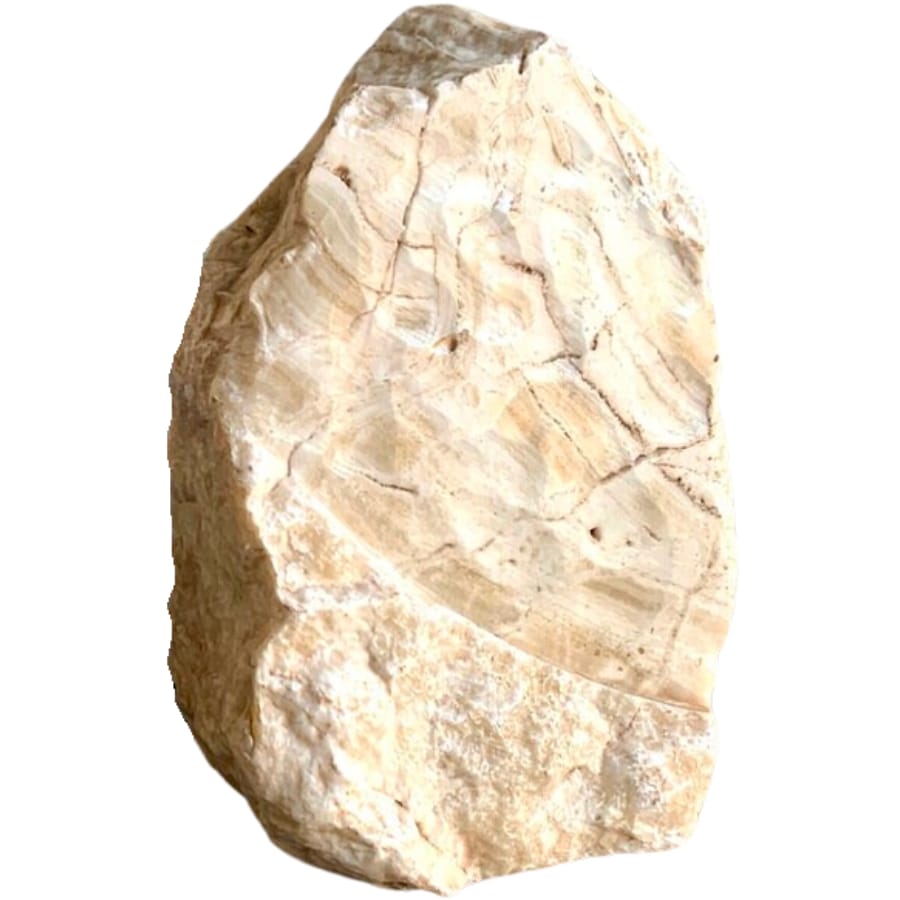
Marble has been used for thousands of years in art and buildings. Famous for its smooth surface, it can come in many colors like white, black, green, and pink.
This rock starts its life as limestone or dolomite, which are softer kinds of rock. Under high heat and pressure, the rock gets squished and heated up, and the minerals inside change.
This process is called metamorphism, and this is what gives marble those beautiful swirls and patterns.
Marble has been used to make statues, buildings, and even fancy countertops. One big reason is how it looks— those pretty patterns and colors make it stand out. Also, it’s really strong and lasts a long time, which is great for buildings and sculptures.
When talking about the price of marble, it can get a bit pricey. That’s because it’s not easy to get. Mining marble takes a lot of work, and because it’s so pretty and useful, lots of people want it.
Where you can find marble in Nevada
Marble is naturally found in the Carrara Marble Quarry and foothills area of Beatty.
Copper
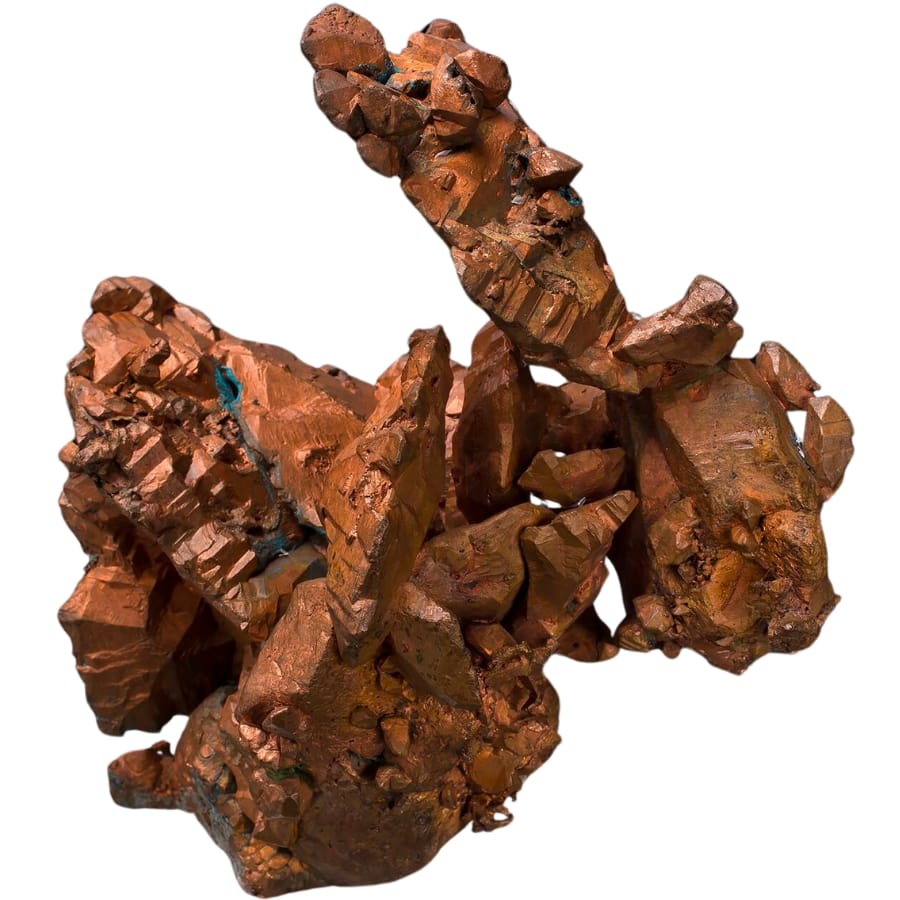
Copper has a unique reddish-orange color that makes it easy to spot. It can be found in nature just by itself, as pure copper, or mixed with other minerals. Most of the time, it’s found with minerals like chalcopyrite, bornite, and malachite.
It’s formed deep underground or even in volcanoes. Over a long time, water and heat work together to move and concentrate the copper into deposits. These deposits, big or small, are where we get most of the copper we use today.
The value of copper comes from how useful it is. It’s important for making electrical wires because it conducts electricity really well. This makes it perfect for anything that needs power, like lights, computers, and televisions.
Copper is also used a lot in plumbing and construction because it’s easy to bend and doesn’t rust. It can last a long time without breaking down.
Another cool thing about copper is that it can be recycled over and over without losing its quality. It’s a sustainable choice. People have been recycling it for a long time, and that helps make sure there’s enough for everything we need it for.
Where you can find copper in Nevada
Copper is widespread in our state and if you want to find it, here are some areas you can visit:
- Carson River area mines
- Eagle Valley area mines
- Ruth Copper Pit
Colemanite
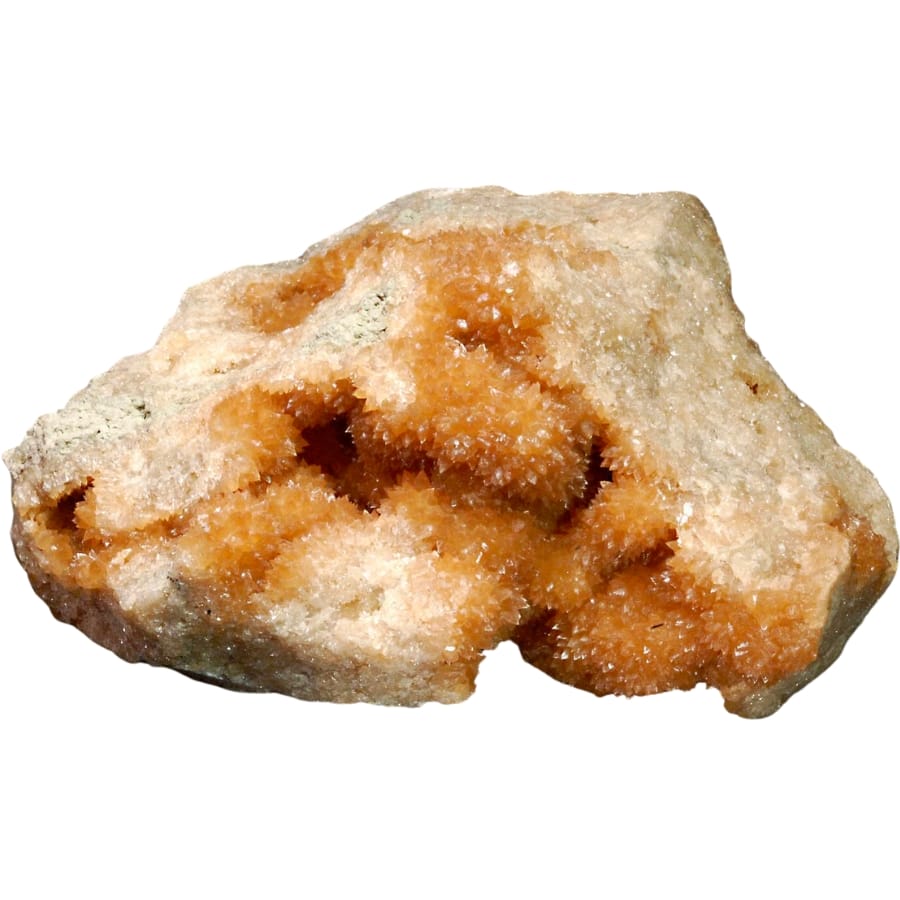
Colemanite is usually white or colorless and can be kind of shiny, like glass. Sometimes, it has a bit of a yellow or brown tint. Its crystals can also form shapes that look like flat plates or prisms.
It’s usually found in places that used to be lakes or hot springs a long, long time ago. When these places dry up, the water leaves behind different minerals, and one of those can be colemanite.
Colemanite is valued mainly because it’s a source of boron, a super useful element. It’s used in a lot of things like glass, ceramics, and even as a cleaner in laundry detergents.
Boron is also used in making fiberglass, which is used in insulation and in making strong, lightweight materials for cars and boats.
Colemanite is valuable for collectors. Because its crystals can be really pretty, people like to collect them. They’re unique because you don’t see them as often as other minerals.
Where you can find colemanite in Nevada
Rockhounds have reported finding colemanite in the Muddy Mountains and White Basin areas.
Flint
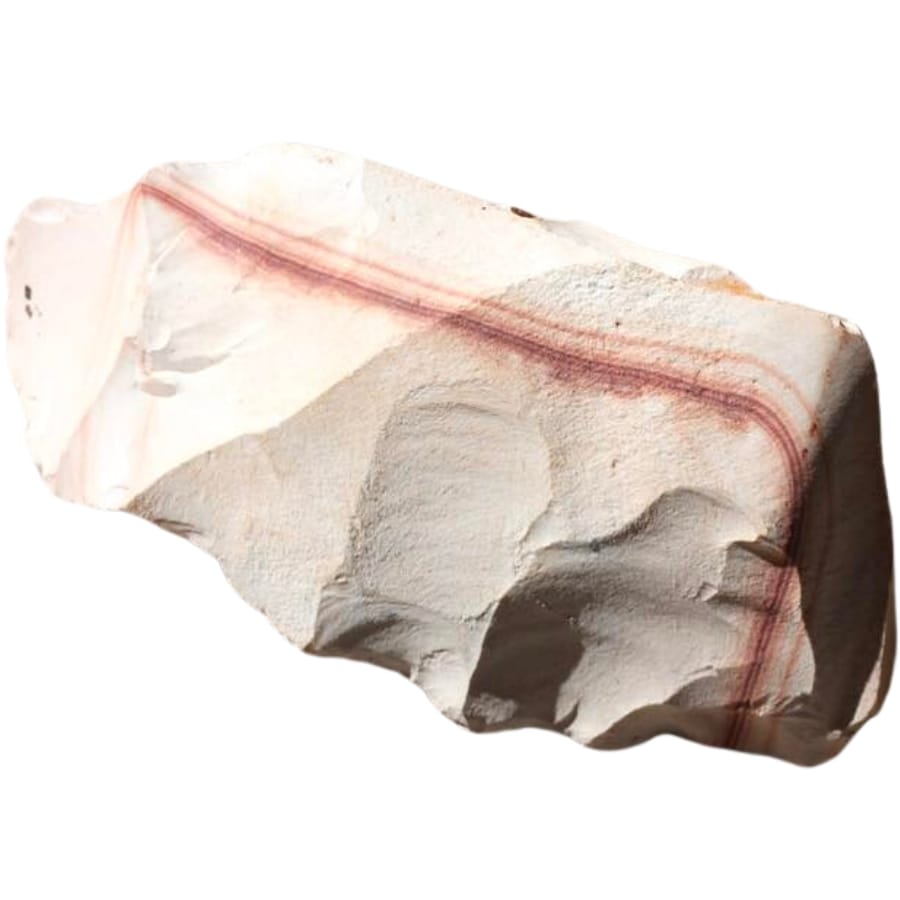
Flint often looks dark gray or black and has a kind of glassy or shiny look to it. It’s pretty tough and can break into sharp pieces, which is one reason it’s so special.
It starts out as a kind of silica that’s found in the ground. It gets into spaces inside chalk or limestone, which are softer rocks. Over a long time, the silica turns into flint.
The value of flint comes from its toughness and the way it breaks. Long ago, people found out that when it breaks, it makes sharp edges. This made flint perfect for making arrowheads, knives, scrapers, and other sharp tools in ancient times.
Today, it’s still valued, but for different reasons. It’s used in some types of outdoor equipment. For example, it can help start a fire because it creates sparks when struck against steel.
Flint also has a role in teaching us about the past. The tools and weapons made from this rock by ancient people help us understand how they lived and survived.
Where you can find flint in Nevada
Below are some of the areas where you can uncover flint in our state:
- Virgin Valley area
- Agate Point
- Area surfaces of Panaca
The Gemstones Found In Nevada
Besides a rich collection of rocks and minerals, there are extensive varieties of gemstones found in Nevada. To find them, you can use the following guides that we created:
Opal
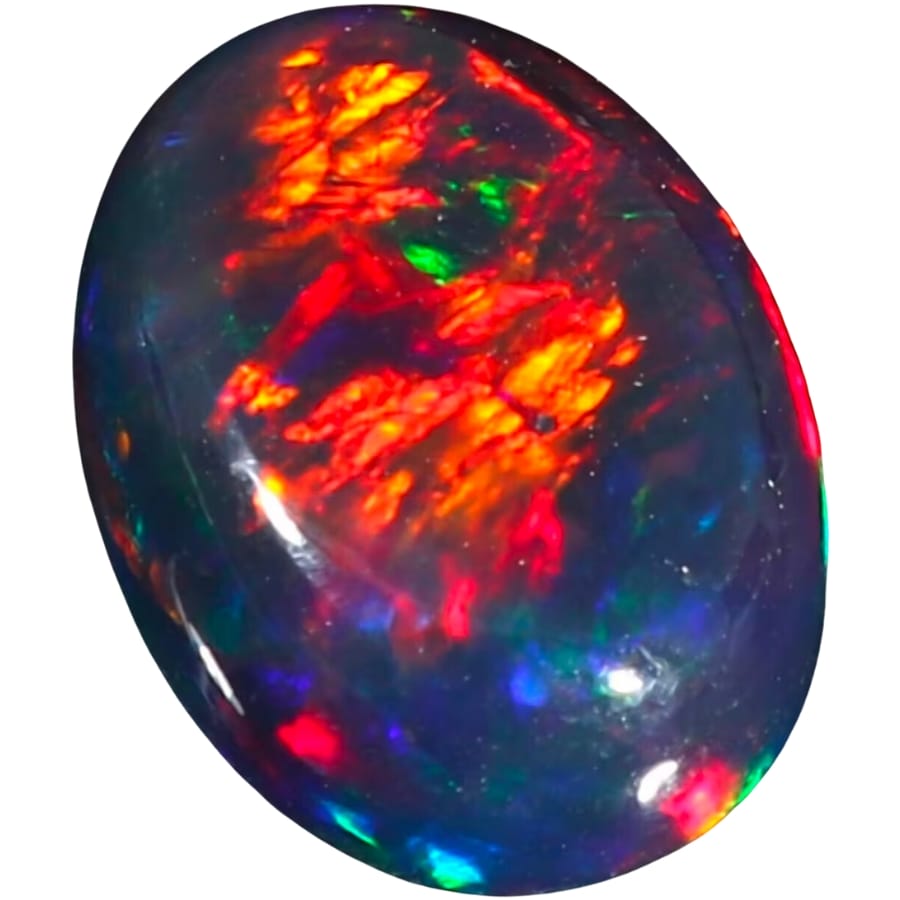
Opal is a dazzling gemstone that’s known for its ability to shimmer and shine in all the colors of the rainbow. It can be lots of different colors, from clear to black, and some can change colors depending on how you look at them.
This gem starts out when tiny bits of silica get mixed with water. It seeps into cracks and spaces in rocks.
Then the water evaporates, leaving the silica behind. This process repeats over and over, and eventually, these silica deposits turn into opal.
The Virgin Valley black fire opal is Nevada’s official state precious gemstone. It’s dark in color but has bright flashes of red, green, blue, and orange when the light hits it just right. The “fire” in its name comes from these vibrant flashes that look like flames.
The value of opal comes from its stunning appearance. Jewelers and artists love to use it in rings, necklaces, and other kinds of jewelry because of its beauty and the way it captures light.
Where you can find opal in Nevada
There are tons of locations where you can find opal here, but the most well-known one where black fire opal hides is at the Virgin Valley opal mines. You can also find opal in the Black Rock Desert and slopes of Montezuma Peak.
Turquoise
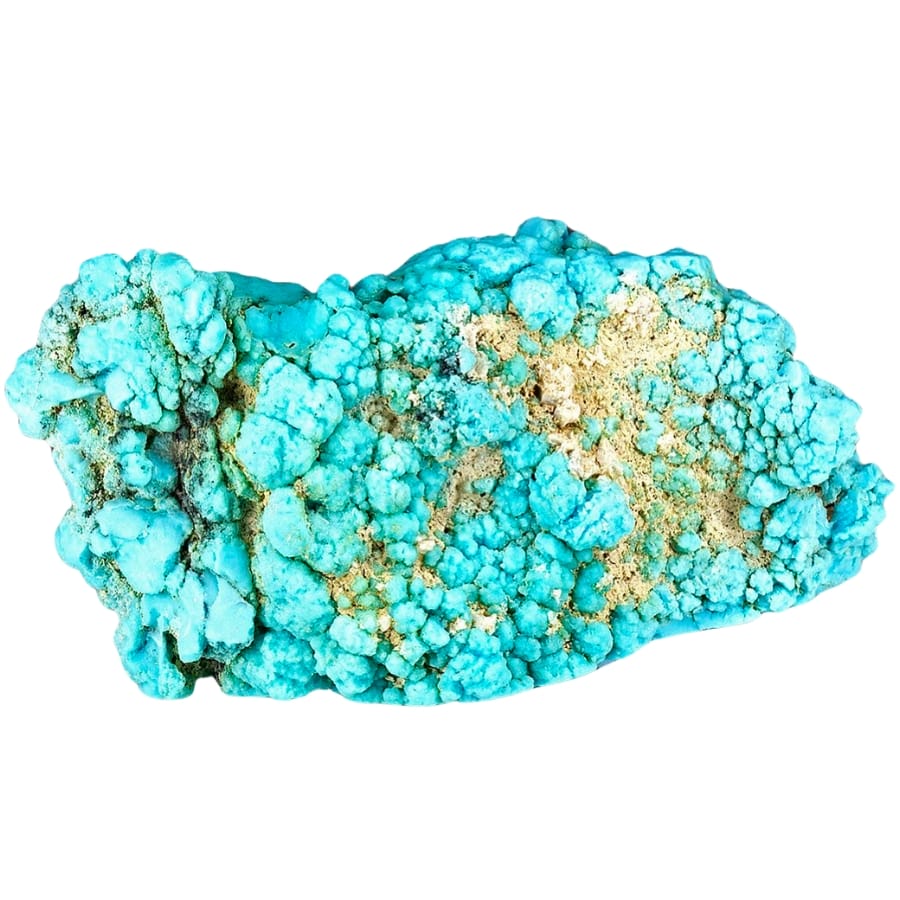
Alongside the opal, turquoise is Nevada’s official state semi-precious gemstone. It’s famous for its bright blue to green colors, which you don’t see in many other gems.
Turquoise forms when water moves through rocks that have minerals like copper and aluminum. Over a long time, these minerals mix with phosphate and create this gem.
The price of turquoise can vary a lot and you can refer to these price ranges in our article. It depends on factors like its color, where it comes from, and how rare it is.
Turquoise has been loved for thousands of years. It’s been used in jewelry like necklaces, bracelets, and rings. In some cultures, it’s is believed to bring good luck and protection.
This gem is also valued because it’s part of history and culture. Native American tribes in the Southwest have been using it for a long time in their art and traditions. They create amazing jewelry and decorations with it.
Where you can find turquoise in Nevada
Luckily, our state is rich in turquoise deposits. Among the many places where you can find this stunning gem here are:
- Copper King Mine
- Foothills of the Monte Cristo Range
- Rock Creek
Variscite
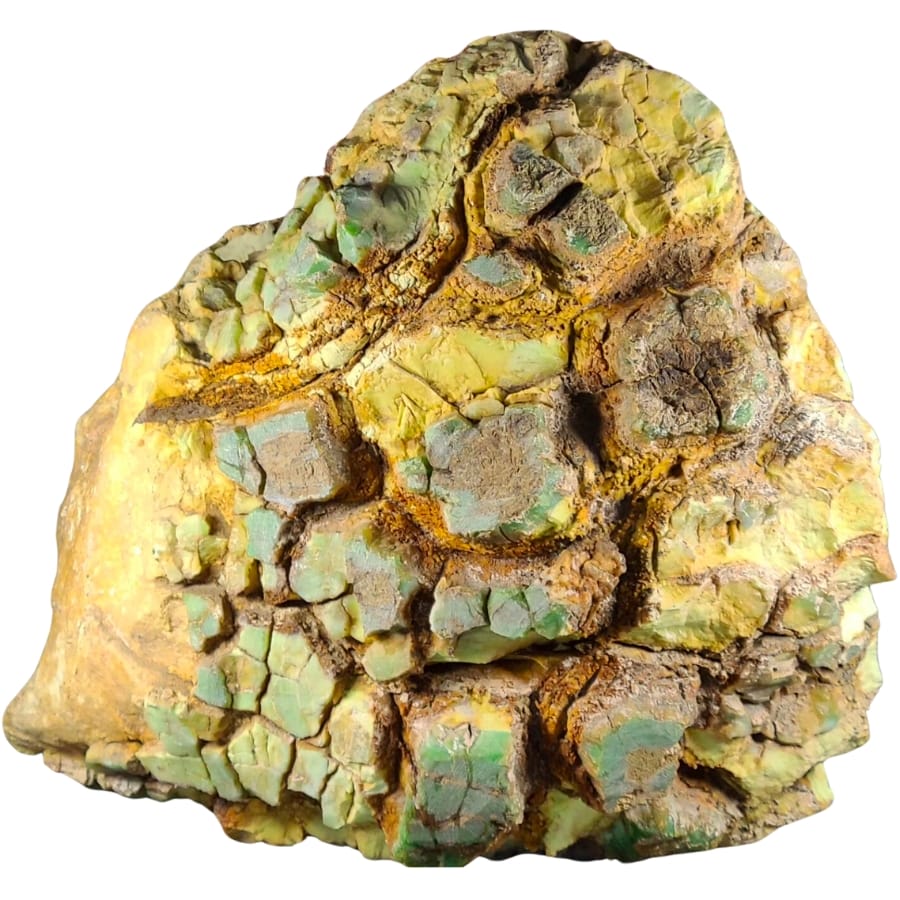
Variscite is usually a green color, kind of like a light, minty green, but it can also be blue or yellow. It has a waxy look and feel, which makes it different from other shiny gemstones.
It’s made when phosphate-rich water moves through rocks that have aluminum in them. These elements then combine and create variscite. This process happens underground, usually in places that are dry and have lots of clay.
The value of variscite can change based on its color, how clear it is, and where it comes from. The more vibrant and clear the color, usually the more valuable it is. Because it’s not as well-known, it can be more affordable than other gemstones.
However, some really nice pieces can still be pretty pricey. It’s often used in jewelry because of its lovely color and the way it feels.
Variscite also has a cultural value. It’s been used by Native Americans in the Southwest for making beautiful jewelry and art pieces. This adds to its charm and story.
Where you can find variscite in Nevada
If you want to find variscite here, you can search through the following areas, among many others:
- Carr-Lovejoy variscite claim
- Bonnie Blue Mine
- Dunwoody variscite claim
Garnet
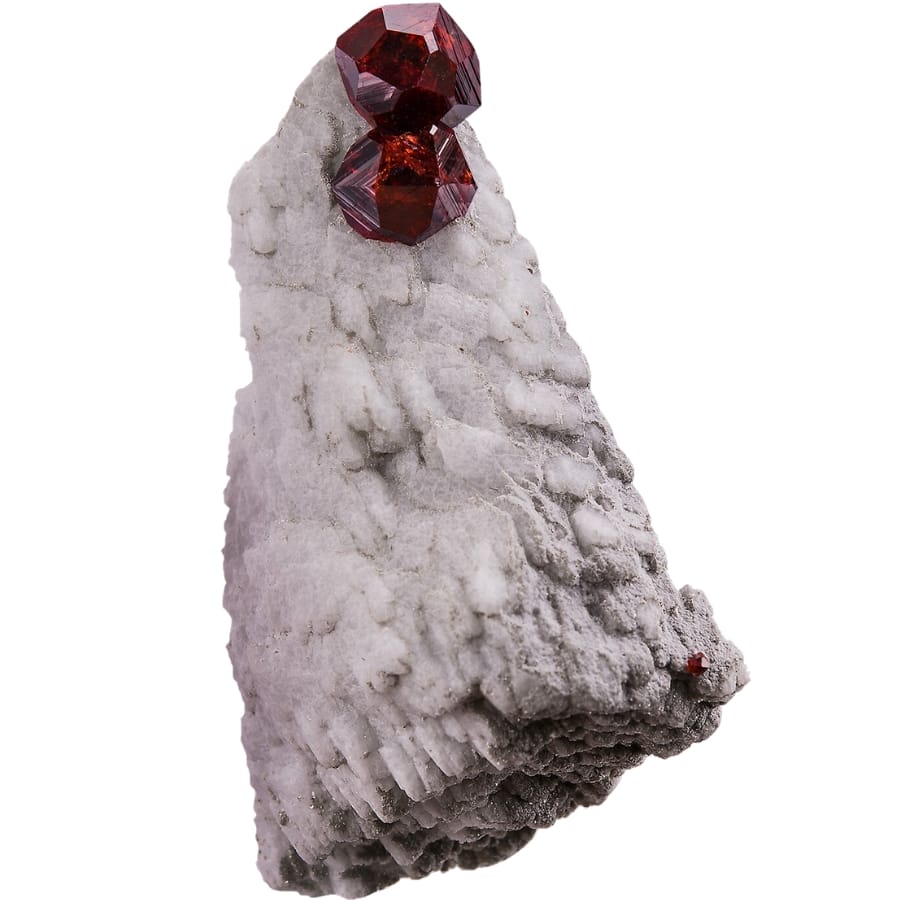
Garnet comes in lots of different colors, like deep red, green, orange, and even purple. It’s pretty famous for its red variety, which can be as bright as a ruby. It’s not just one mineral, but a whole group that share similar properties and crystal forms.
This gem forms in a variety of ways. Some grow when rocks deep underground are put under high pressure and heat. Others form when certain minerals are altered by chemicals deep in the ground.
Garnets can be found in mountains, riverbeds, and even beaches. They’re often located in schists and metamorphic rocks.
If we’re talking about how much garnet is worth, it can vary a lot. Its value depends on many factors, as you can read in our article. Some rare varieties, like the bright green tsavorite or the vibrant orange spessartine, can be quite expensive.
Garnet is popular in jewelry because of its beautiful colors and how well it lasts. It’s also the birthstone for January, making it extra special for people born in that month.
Where you can find garnet in Nevada
You can find well-formed, deep-red spessartine garnets in the area of Ely. You can also find this gemstone in the canyons north of Lane and in Garnet Hill.
Agate
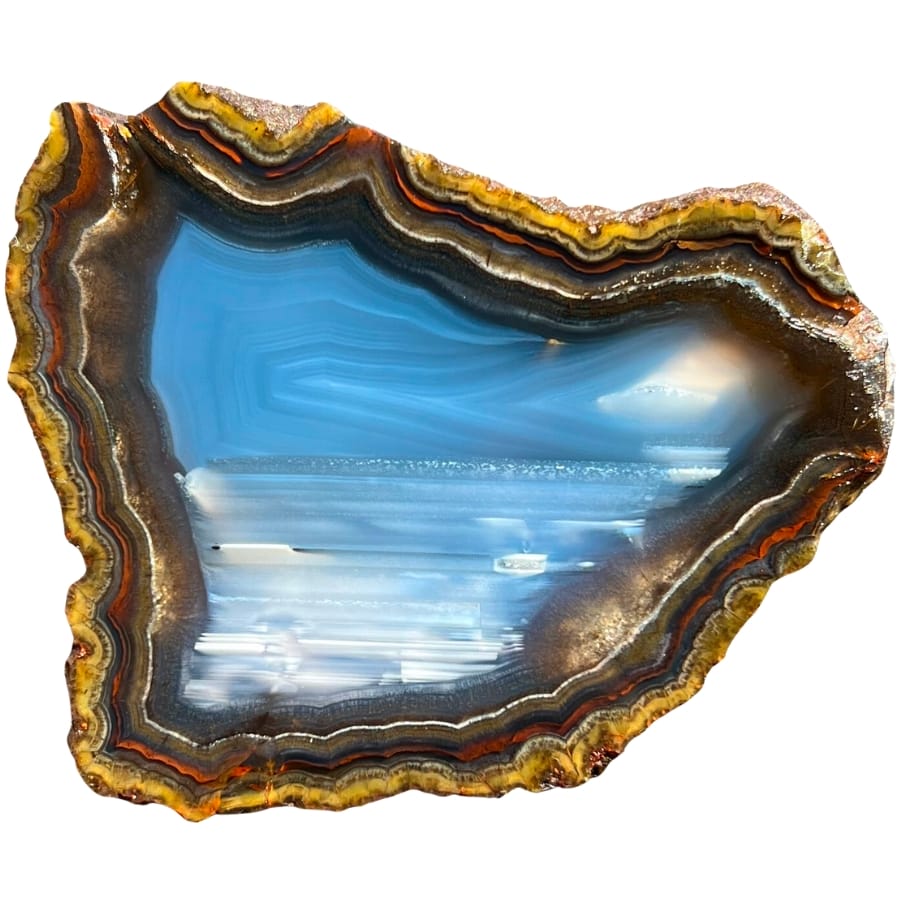
Agate is a kind of quartz that has amazing patterns and colors. It can have stripes, spots, or swirls, and comes in all kinds of colors like red, yellow, green, blue, and brown. Sometimes, it’s even multicolored!
This gem starts inside hollow spaces in rocks. Water with silica in it seeps into these spaces. Layer by layer, the silica deposits settle and harden, forming agate. Each layer can be a different color, depending on the minerals in the water.
That’s why it’s usually found in areas with old volcanic rocks or in riverbeds where the water has washed it out of those rocks.
Agate’s price can vary a lot, depending on its color, clarity, and the uniqueness of its patterns. It’s often used in jewelry like necklaces, bracelets, and rings. Because of its hardness and durability, it’s great for everyday wear.
Agate is also popular among collectors who love its wide range of colors and patterns. Its natural beauty makes it a favorite for many, adding a touch of nature’s art to jewelry and decorations.
Where you can find agate in Nevada
Agate is really abundant in Nevada and it’s pretty widespread, too. You can find it in many locations, including the following:
- Twin Peaks area
- Wild Horse Reservoir
- Bluff near the Esmeralda Lake
Jasper
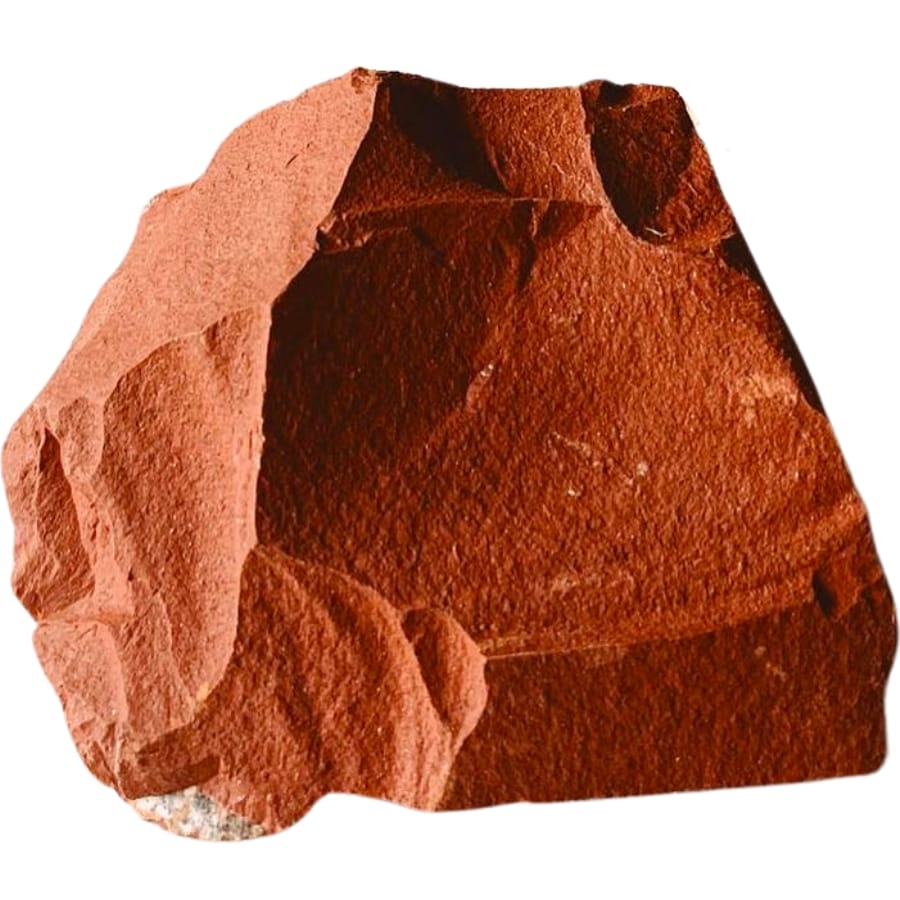
Another part of the quartz family is jasper. It can come in a lot of colors like red, yellow, brown, green, and even blue or purple. It often has stripes, spots, or swirls.
This gem forms from silica, the same stuff that makes up quartz. It happens when this silica gets mixed with other minerals, which gives jasper its different colors and patterns.
This mix usually happens in old volcanic ash or in places where there’s been a lot of heat and pressure over a long time. So it’s usually located in areas with a lot of volcanic rocks, like mountains or old lava flows. Rivers can also carry it to its beds.
Jasper’s value comes from a few things. First, it’s just beautiful to look at. Its wide range of colors and patterns make it popular for making jewelry. It’s is also pretty tough and doesn’t scratch easily, which makes it great for everyday jewelry.
Besides being pretty, jasper is also valued for being a part of history. For thousands of years, people have used it to make tools, jewelry, and even as a healing stone.
Where you can find jasper in Nevada
Just like agate, jasper is also bountiful and widespread in our state. If you want to find it, here are some areas you can visit:
- Columbus Salt Marsh flats
- Henderson area manganese plant
- Toano Draw
Cinnabar
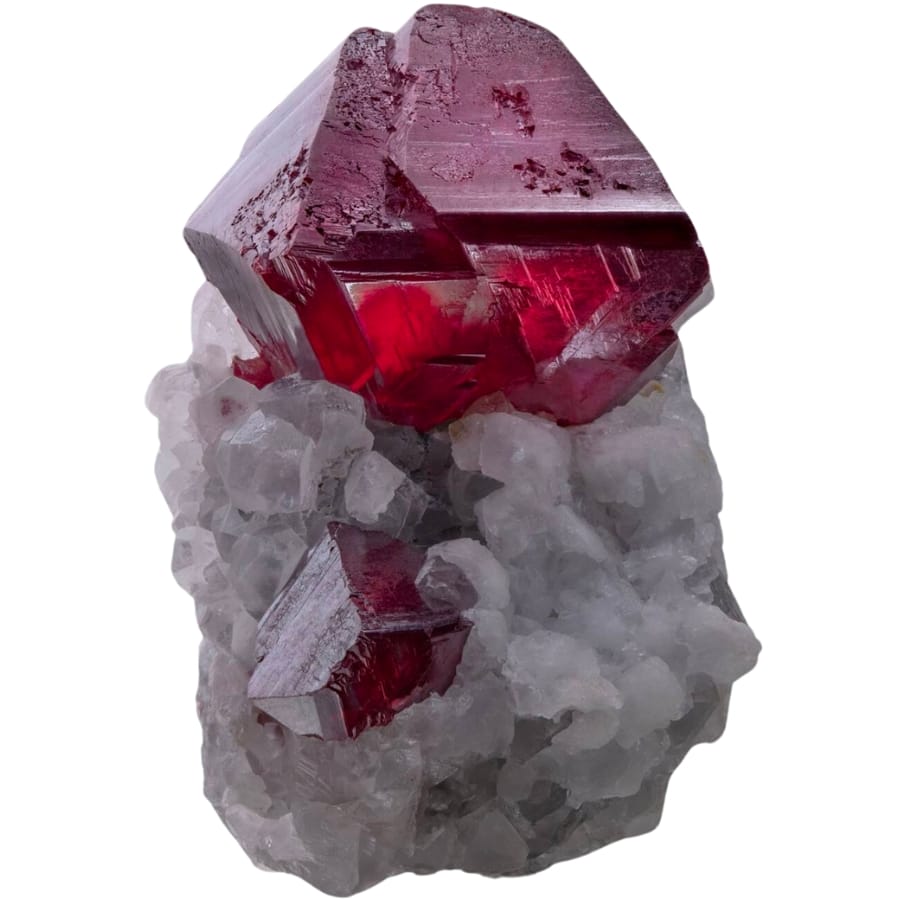
Known for its bright red color, cinnabar is the main source of mercury. It’s sometimes found in a rock that’s a different color, which makes it stand out.
It forms in areas where there are volcanic or hot spring activities. Hot, mineral-rich waters move through rocks deep underground. As the water cools down, cinnabar starts to form from the minerals in the water.
This gem is often located in regions with old volcanic activity or hot springs, where the right conditions for it to form are present.
The value of cinnabar comes from a few things. Its eye-catching, bright red color makes it popular for jewelry and decorative objects. However, because it contains mercury, which can be harmful, it has to be handled and used carefully.
Cinnabar has also been important throughout history. In ancient times, people used it as a pigment to make bright red paint. This paint was used in art and to decorate important buildings.
Where you can find cinnabar in Nevada
Cinnabar can be found in a number of areas within our state, such as:
- Rand Mine
- Silver Cloud Mercury Mine
- Battle Mountain area mercury mine
The Crystals Found In Nevada
Are you curious to know all about the crystals found in Nevada? This section will delve deeper into the common ones that you can uncover here.
And if you need a handy guide to point you to the right places where you can find them, check out the one that we created below:
Citrine
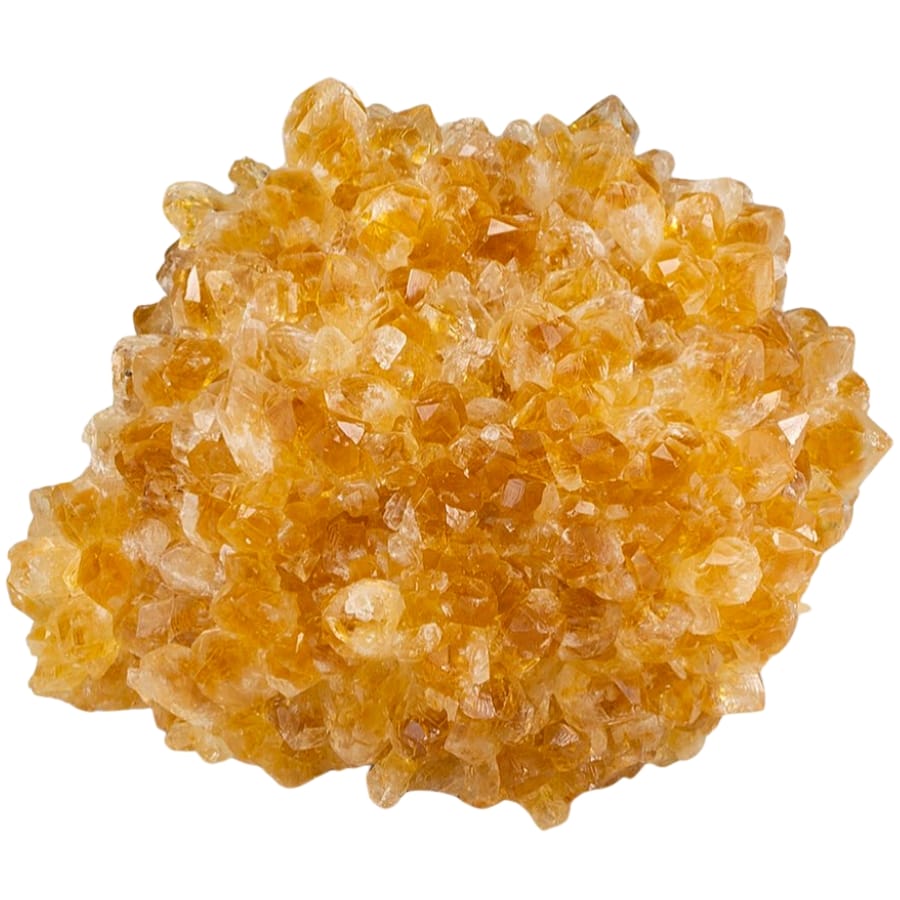
Famous for its beautiful yellow color, citrine is part of the quartz family. Its color can range from a light lemony yellow to a deep, golden brown. What’s cool about it is that it’s pretty rare in nature to find quartz this color.
It forms in a similar way to other types of quartz. It starts out as clear quartz, which is made of silica. The yellow color comes from traces of iron. Sometimes, it can form naturally when amethyst is heated up deep underground and changes into citrine.
You can usually find this crystal in areas where there are quartz deposits, often near volcanic regions.
The value of citrine is tied to its unique color and rarity. Because natural citrine is pretty rare, it’s quite special and sought after by gem collectors and jewelry makers. It doesn’t scratch easily, which makes it great for everyday wear.
It’s also well-loved by many people born in November as it’s their birthstone. Its warm, sunny color has made it a favorite for centuries, often associated with positivity and joy.
Where you can find citrine in Nevada
To find citrine, we recommend exploring the area surfaces, gravels, and outcrops in Tuscarora and the Gold Mountain.
Quartz
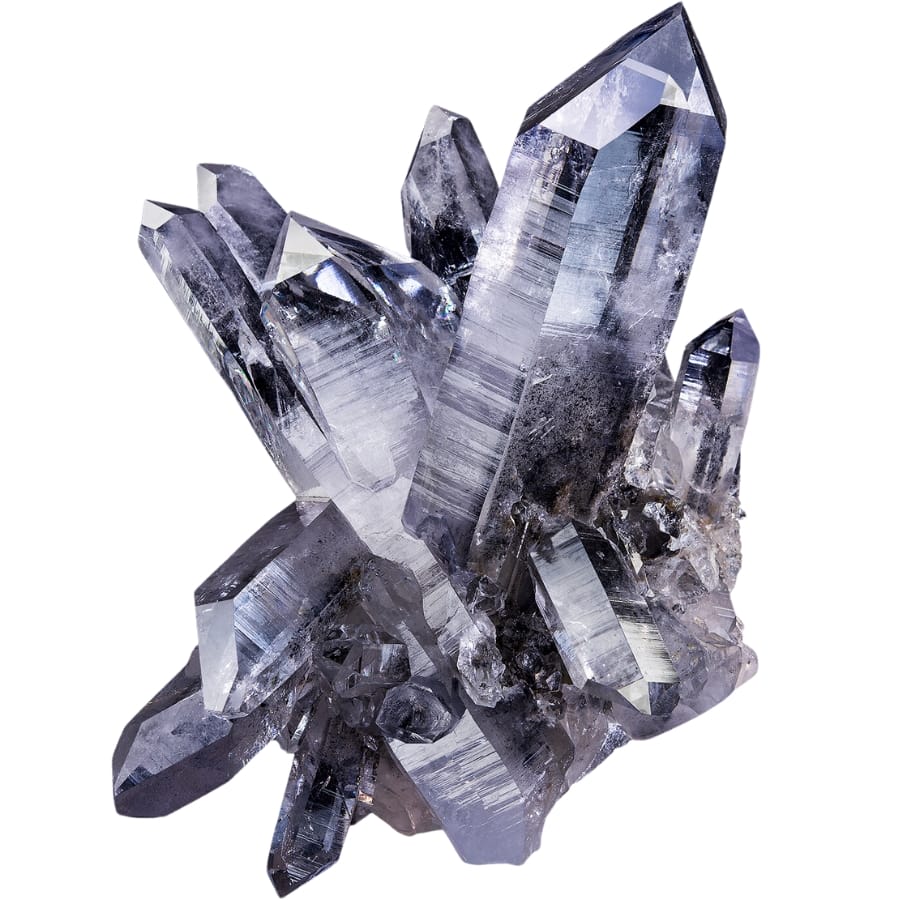
Quartz is known for being really clear, but it can also be found in a bunch of different colors like pink (called rose quartz), purple (amethyst), and even black (smoky quartz).
It forms deep underground and starts out as tiny particles of silica. Over a period, these particles grow and stick together, forming large crystals.
You can find quartz all over the world in places near volcanoes or mountains. You can also find it in riverbeds and beaches, where it’s been washed down from the mountains.
The price of quartz isn’t as high as some other gems like diamonds or sapphires because it’s more common. But some types, like clear, well-formed crystals or beautifully colored varieties, can be more valuable.
This crystal is often used in jewelry because it’s pretty and strong enough to be worn every day. It’s also used in watches and clocks because it helps keep time accurately.
Where you can find quartz in Nevada
There are many sites that you can visit here for some quartz finds, such as:
- South of town in the Searchlight area
- Manhattan area mines
- Victoria Mine
Malachite
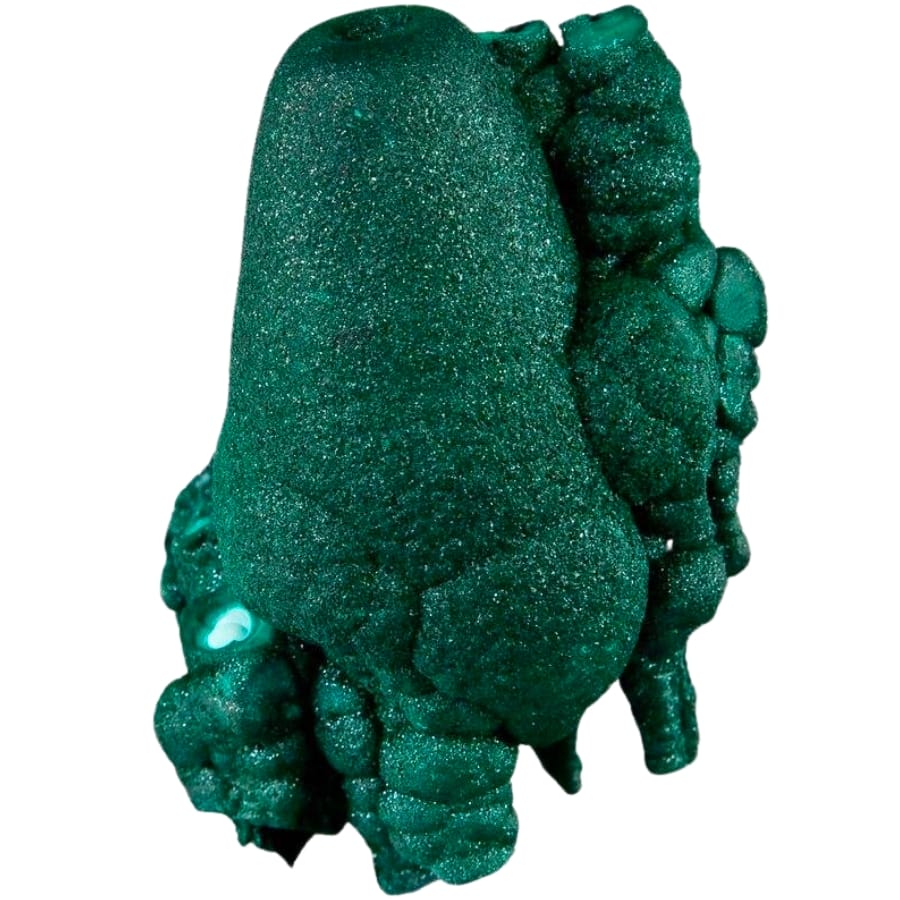
Malachite stands out because of its bright green color. It often has beautiful, swirly patterns in different shades of green, from light to dark.
Its formation starts when copper-rich water seeps through rocks underground. This water then reacts with minerals and chemicals in the rocks, and slowly, malachite starts to grow.
This process can happen near copper deposits, which is why malachite and copper are often found together in old mines or near copper deposits.
The worth of malachite isn’t just because it’s pretty. It’s been valued for a long time, even in ancient Egypt, where it was used for jewelry and decorations.
Today, it’s still used in jewelry, like necklaces and earrings. It’s also popular for making decorative items like bowls and vases because of its striking color and patterns.
Where you can find malachite in Nevada
You can find malachite in several locations here. Some of these places are:
- Wilson Mine
- Sullivan Mine
- Ruth Copper Pit
Obsidian
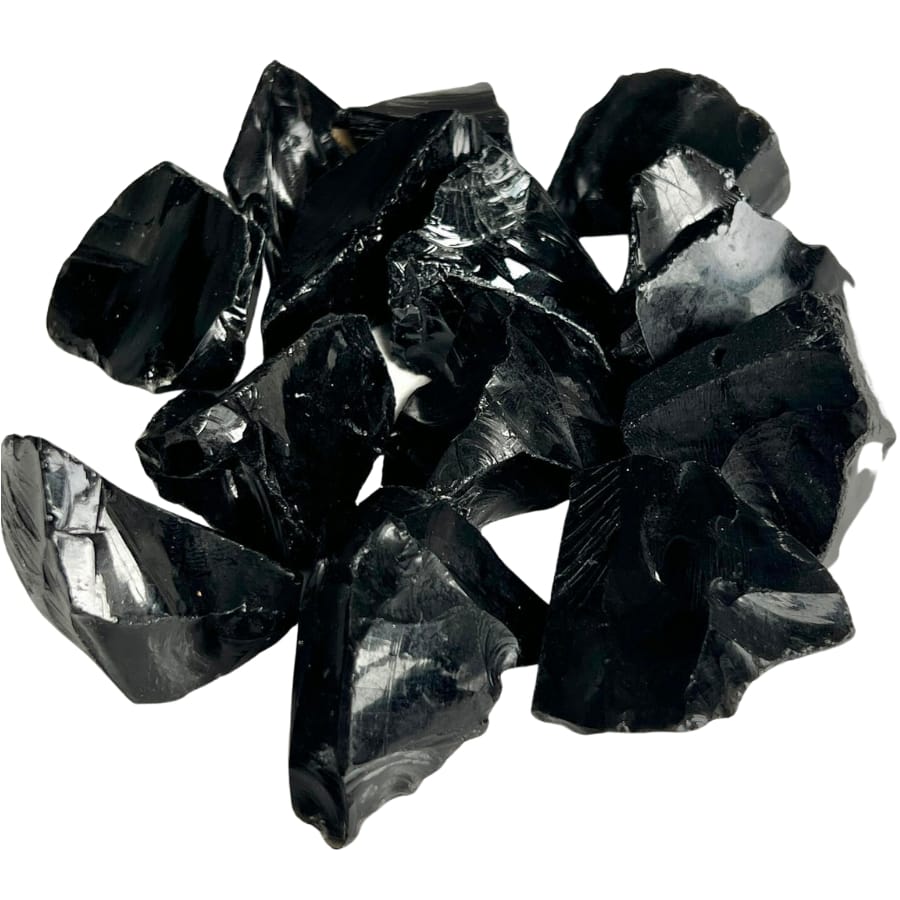
Obsidian is shiny and black, but sometimes it can have different colors in it, like brown, green, or even a beautiful, rainbow-like sheen. And it’s formed in a fascinating way.
It happens when lava from a volcano cools down super quickly. Because it cools so fast, there’s no time for crystals to form, which is why obsidian has a smooth, glassy look.
You can find this crystal in places that have had volcanic activity. It’s often located around the edges of old lava flows.
Obsidian’s price depends on a lot of factors. Some of its types, especially those with unique colors or patterns, can be more valuable.
It’s been used for thousands of years to make tools and weapons because it can be broken to have sharp edges. Today, it’s popular in jewelry and for making sculptures because of its sleek, dark look.
Where you can find obsidian in Nevada
Many sites in our state naturally bear obsidian. If you want to find them, here are sites you can visit:
- Montgomery Pass in Queen Mountain
- Fish Lake
- Silver Peak area
Rhodonite
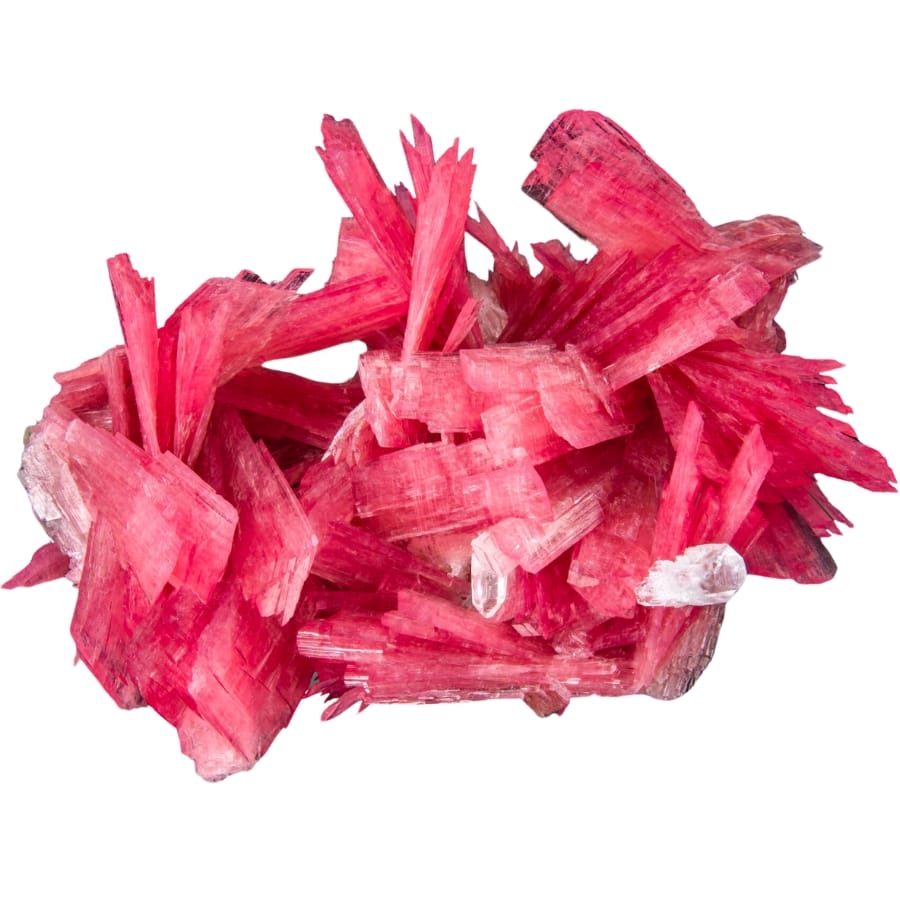
Rhodonite is known for its striking pink or rose-red color. Sometimes, it has black, white, or gray patterns in it, which makes it look really unique.
It forms when magma slowly cools down. During this cooling, different minerals like manganese start to mix together. This mixture creates rhodonite. This process usually happens in places where there’s a lot of geological activity.
That’s why you can often find this crystal in areas where there have been volcanic activities or where mountains have formed.
Rhodonite’s value comes from a few things. First, its color is eye-catching and different from other gemstones. This makes it popular for jewelry, like necklaces and rings. People love the way it adds a pop of color.
It’s also valued for its meaning and symbolism. In some cultures, it’s thought to represent love and healing.
Where you can find rhodonite in Nevada
We highly recommend visiting the Rainbow Ridge Opal Mine if you want to uncover rhodonite.
Thulite
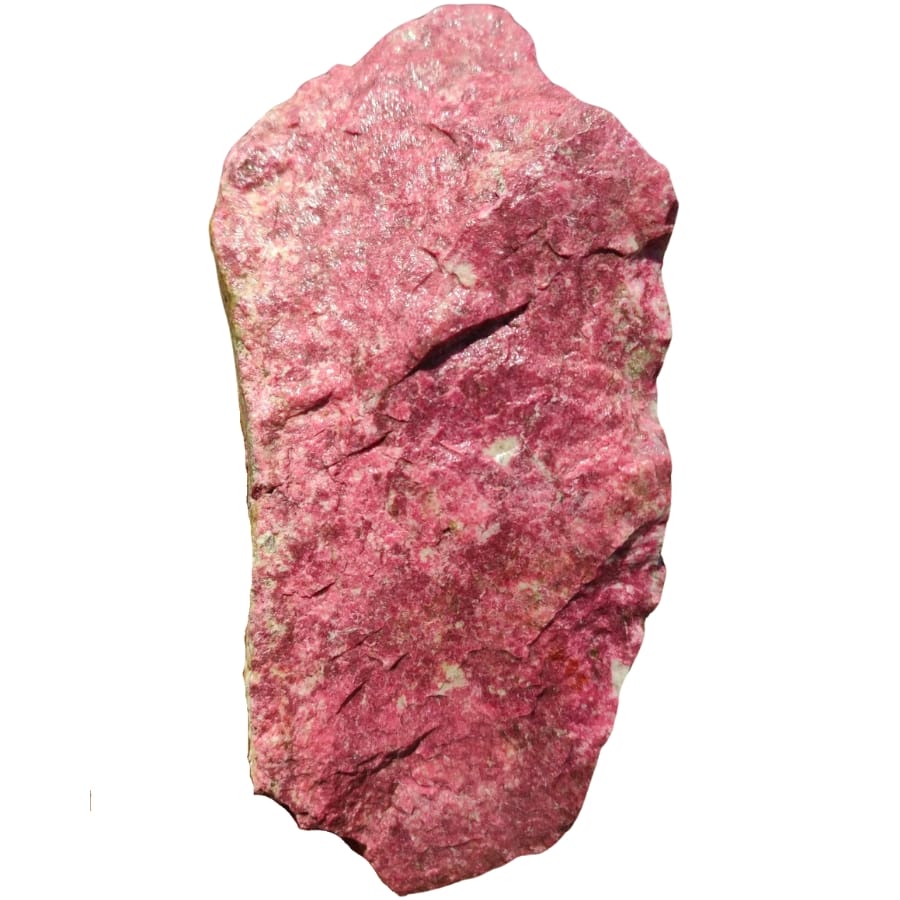
Like rhodonite, thulite is known for its lovely pink color. It’s a type of zoisite, which is a mineral that can come in different colors.
But thulite’s pinkish hue is distinct. It can range from a light, almost pastel pink to a deeper, rosy pink. This color comes from manganese, a kind of metal, mixing in with the zoisite.
This crystal forms in rocks that have been changed by heat and pressure, a process called metamorphism. It usually happens deep underground where the conditions are just right.
The value of thulite comes from its beauty and rarity. Its pink color is distinct, making it a popular choice for jewelry.
It’s also valued by collectors. Since it’s not super common, finding a piece of thulite can be exciting for someone who loves collecting rocks and minerals.
Where you can find thulite in Nevada
Some of our preferred places to search for thulite are:
- Pine Nut Mountains
- Mine in Tempiute area
- Singatse Range
The Most Valuable Rocks and Minerals in Nevada
Did you know that, besides common finds, there are also amazing valuable rocks and minerals in Nevada? We’ll share with you three of our favorites. Clue: they’ll remind you of your favorite competitive sports!
Platinum
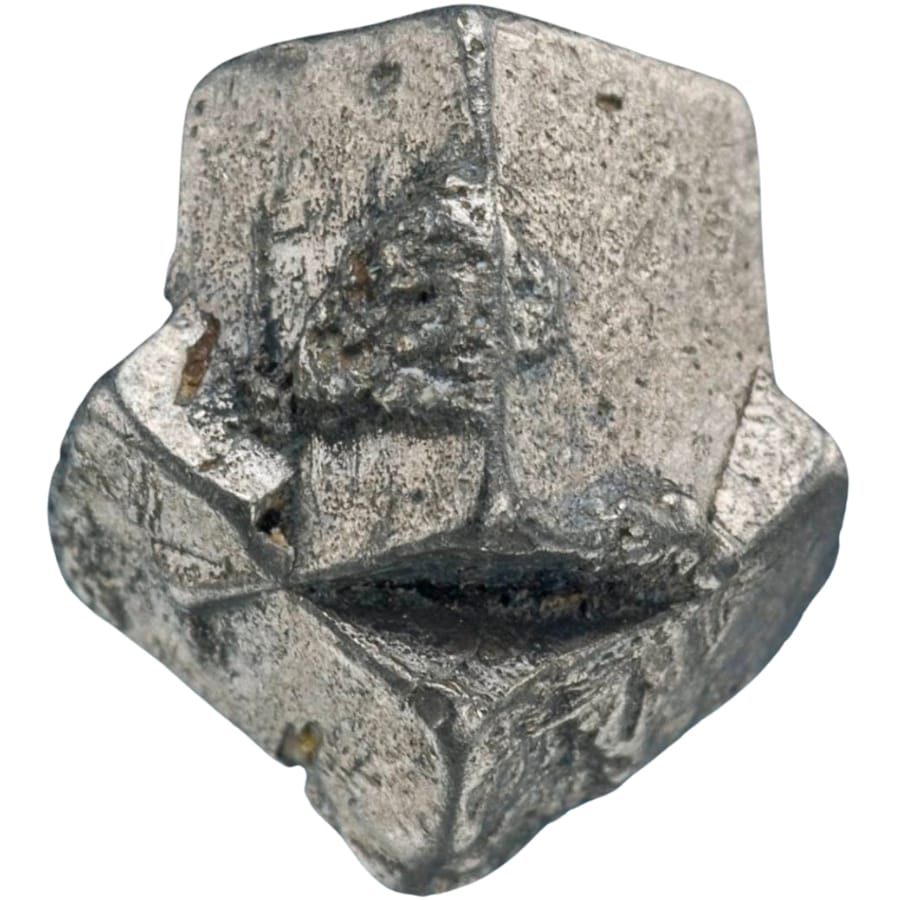
Platinum is a rare, valuable metal. It’s shiny and silver-colored, and it’s incredibly strong and doesn’t rust or corrode, which means it doesn’t break down easily.
It forms deep underground, usually in places where there’s a lot of heat and pressure. This can happen near volcanoes or where the ground has been moving a lot, like near earthquakes.
This valuable metal is usually found mixed with other metals and minerals, so it takes a lot of work to get just the platinum out.
Platinum’s value is high due to its rarity. It’s also super strong and can stand up to a lot of heat and chemicals without getting damaged. This makes it perfect for making jewelry that lasts a long time, parts in cars and planes, and even medical equipment.
It’s also important in science and technology. It’s used in all kinds of gadgets and machines, especially ones that need to work well under tough conditions.
Where you can find platinum in Nevada
Among the many choices of locations you have if you want to find platinum here are:
- Paradise Valley mines
- Washoe area mines
- Area mines in Elko County
Gold
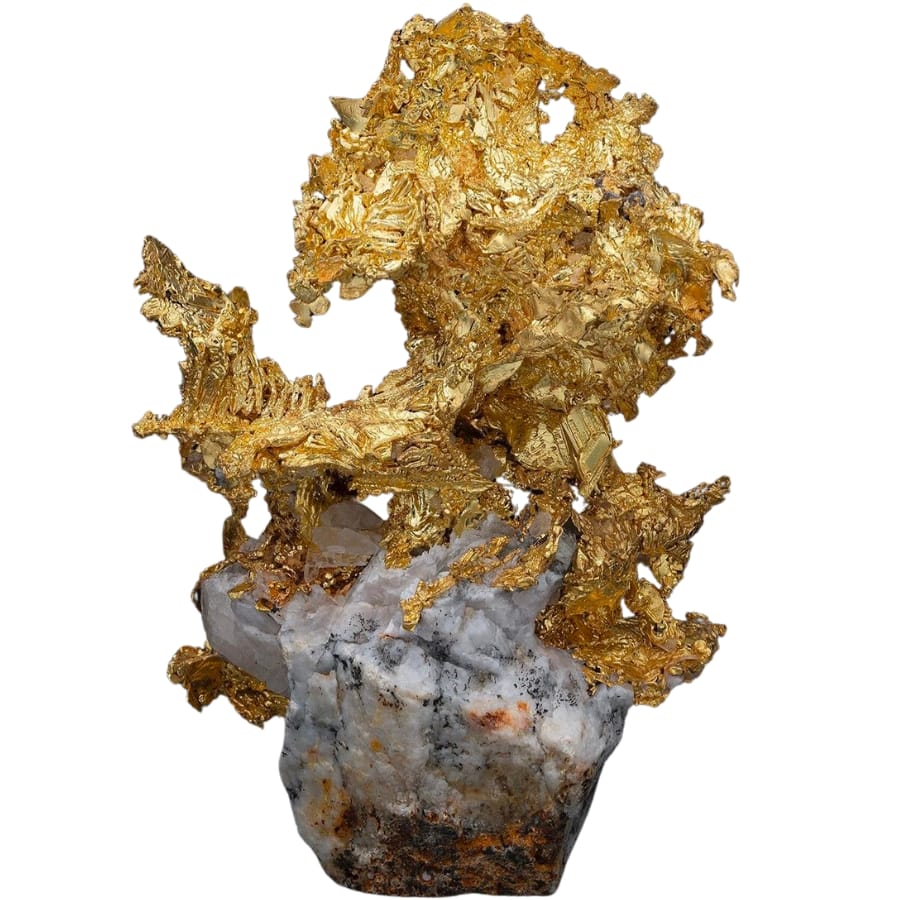
Gold is a valuable, shiny, and bright yellow metal that’s soft and easy to shape. It forms deep under the ground, usually in places where hot water flows through rocks.
This hot water has tiny bits of gold in it, and over time, these bits pile up and form gold deposits. That’s why you can often find it in rivers and streams, where it gets washed down from the mountains. It can also be found deep underground in mines.
The price of gold is usually really high, and there are a few reasons for this.
Gold is pretty rare, so there’s not a lot of it to go around. It’s also very shiny and doesn’t rust or tarnish, which means it stays looking nice for a long time. This makes it perfect for making jewelry and coins.
Gold is also useful in technology. It’s a great conductor of electricity and doesn’t corrode, so it’s used in all kinds of electronics, like cell phones and computers.
Where you can find gold in Nevada
If you want to get your hands on gold finds from our state, here are a few places that you can explore:
- Gold Butte
- Washoe area mines
- Crescent Peak
Silver

Like platinum and gold, silver is a shiny, valuable metal. It has a beautiful white color and it’s softer than a lot of other metals. It’s also good at conducting both heat and electricity.
Silver forms in a few different ways underground. Sometimes it’s found in its pure form. Other times, it’s mixed with other minerals and metals. It’s often found in areas where there are minerals and ores and it’s even found together with gold.
The value of silver comes from several things. First, it’s not super common, so that makes it more special.
It’s also really useful. Because it’s such a good conductor, silver is used in lots of electronics, like cell phones and computers. It’s also used in solar panels and batteries.
Apart from being useful, silver is also really popular for making jewelry and coins. It can be made into all kinds of things, from necklaces and rings to silverware and picture frames.
Where you can find silver in Nevada
Search through the following areas if you want to find silver:
- Mount Diablo Silver Mine
- Sullivan Mine
- Willow Creek near Orovada
How to Identify The Rocks and Minerals You Find
When you’re looking for different rocks and minerals in the wild, there’s a big chance you’ll encounter a piece you can’t identify. That’s where you can use this portion of our guide.
Here, we’ll show you practical and doable tips to help you successfully identify rocks and minerals:
Examine the color
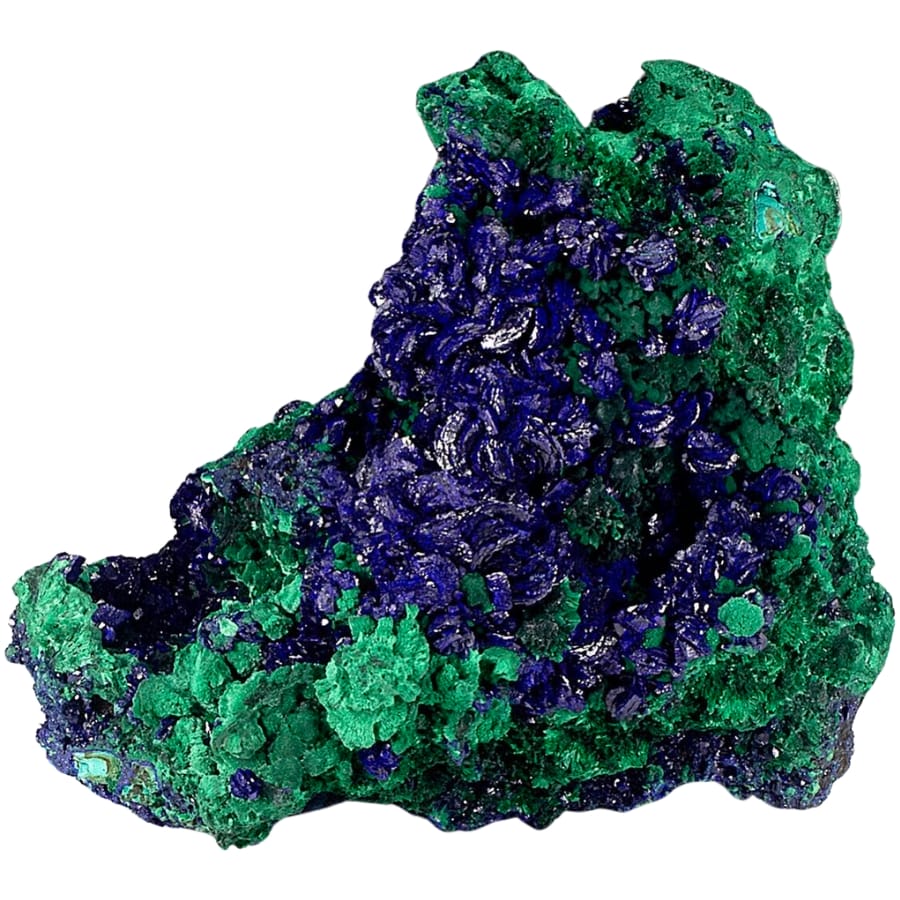
When you find a rock or mineral, one of the first things you can check out is its color. This is a simple but helpful way to start figuring out what it might be.
Some minerals are known for their specific colors, like how gold is always a shiny yellow or how turquoise is a bright blue-green.
But remember, colors can sometimes trick you because a single type of mineral can come in different colors. Also, the surface of a rock might be changed by weather or other stuff around it, which can affect its color.
Observe the luster
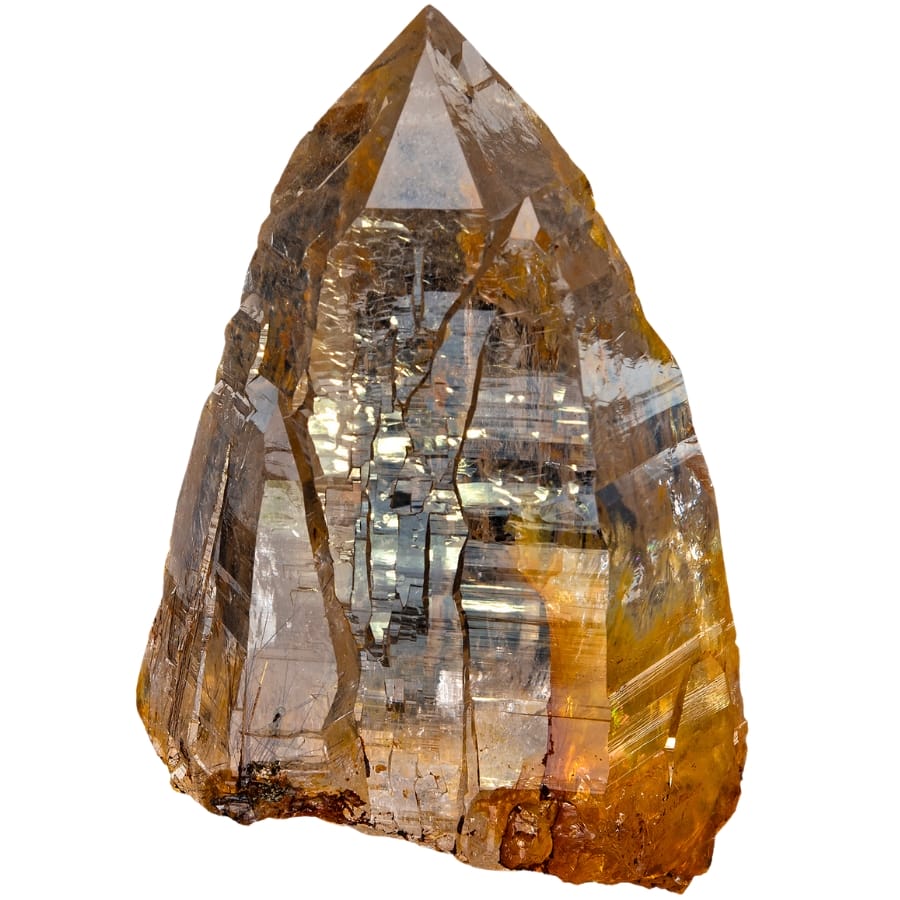
Luster is all about how shiny a rock or mineral is when light hits it. Imagine holding a rock under a light. Does it sparkle like a diamond or shine like a freshly polished car? That’s luster!
If it shines like metal, that’s ‘metallic luster.’ If it looks more like glass and reflects light, that’s ‘glassy luster.’ Many minerals like quartz have this kind. Some rocks might not be shiny at all; they have a ‘dull’ or ‘earthy’ luster.
Checking out the luster helps you guess what the rock or mineral might be.
Check the crystal form
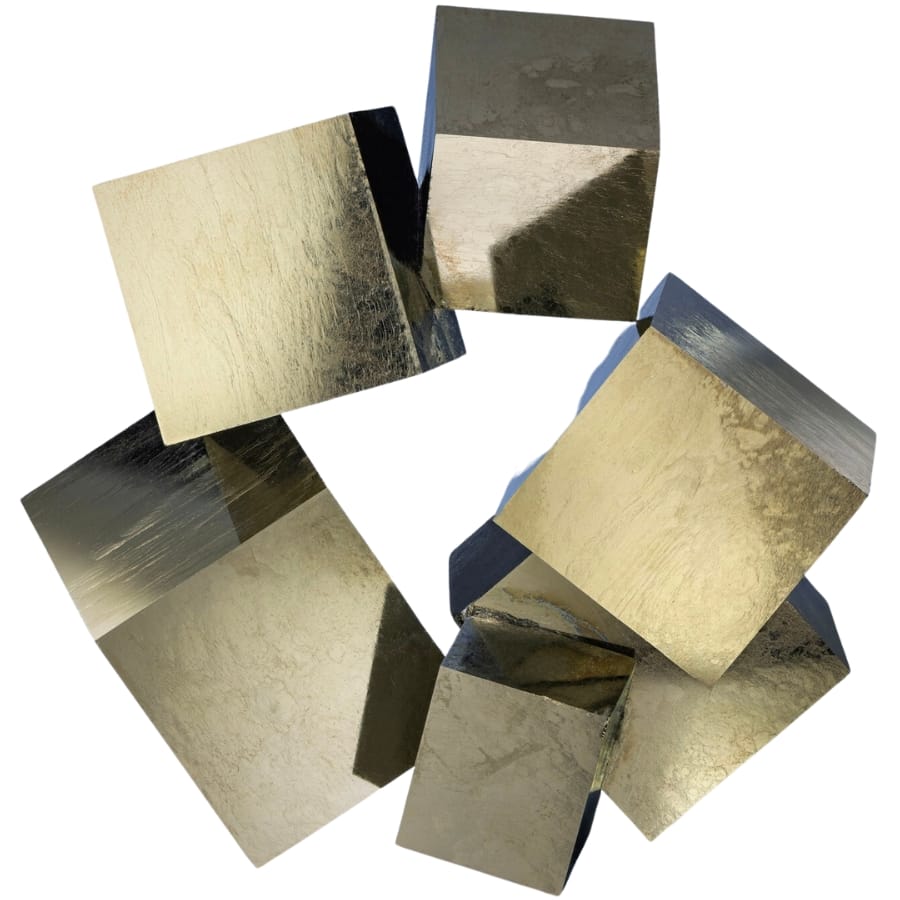
Some minerals grow in specific shapes that can help you figure out what they are.
For example, if you see a mineral with flat sides and it looks like a cube, it could be pyrite. Or, if the mineral has long, six-sided (like a pencil but with more sides) shapes, it might be quartz.
Not all minerals have perfect crystal shapes because they might have been squished or not had enough space to grow. But when they do have these shapes, it’s a helpful clue.
Do a hardness test
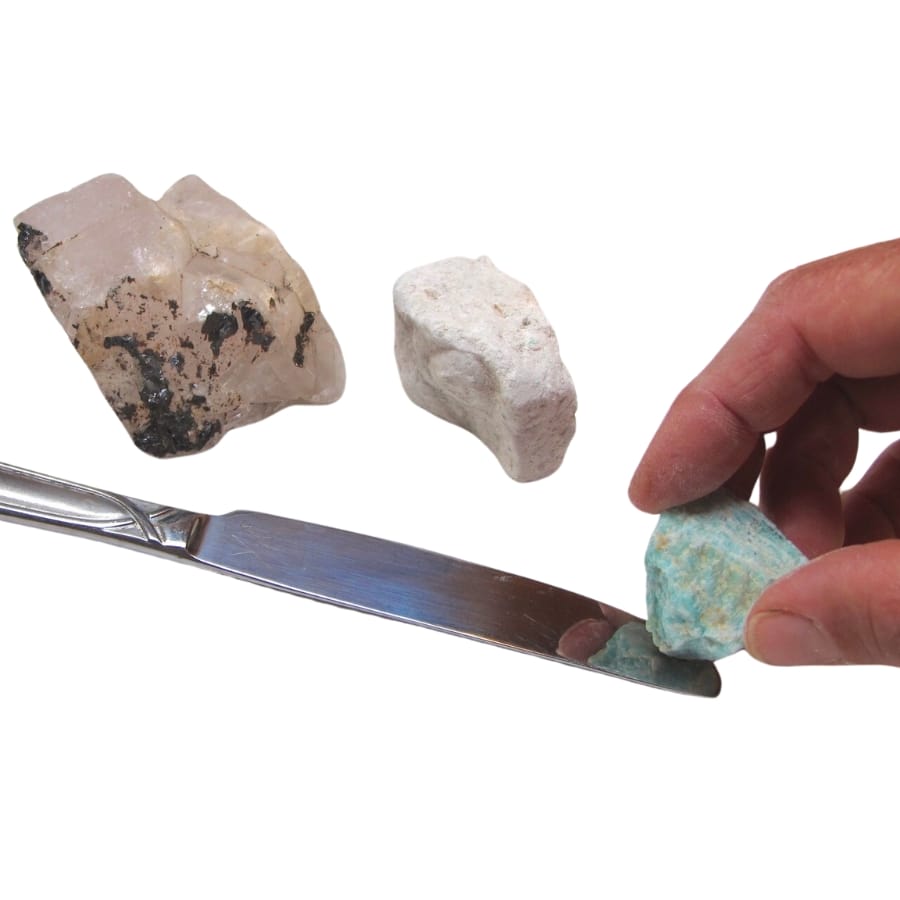
A hardness test helps you figure out where your specimen stands on the Mohs Hardness Scale, which is like a scoreboard of hardness.
Here’s how you do it: Try scratching your specimen with different items. Start with your fingernail (which has a hardness of about 2.5). If your nail leaves a mark, the mineral is softer than your nail.
If not, try scratching it with a penny (hardness about 3.5). Keep going with items of known hardness like a nail or a piece of glass. If the mineral scratches glass (hardness around 5.5), it’s pretty hard!
This test helps you narrow down what your mineral could be. For example, if it doesn’t scratch glass, it’s softer than quartz.
Try a streak test
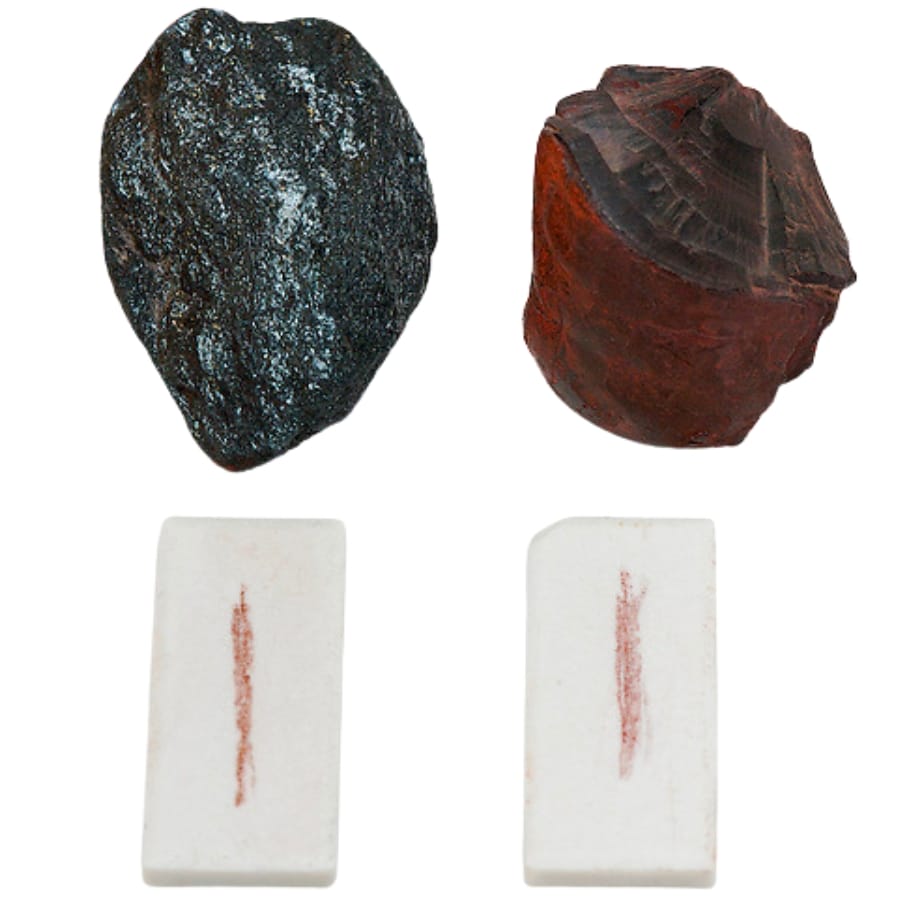
A streak test finds out your specimen’s true color. Here, you use a streak plate, which is just a piece of unglazed porcelain tile.
Take your mineral and scratch it across the streak plate. Don’t worry, you won’t ruin the rock. What you’re looking for is the color of the powder it leaves behind. This powder is the mineral’s “streak.”
The streak color can be different from the color of the specimen itself. For example, hematite might look silver or black, but it leaves a red or brown streak.
This test is helpful because some minerals that look alike have different streak colors.

